

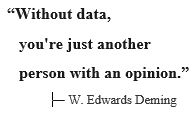

Key Concept List: Ch. 1-6, Ch. 7-10, Ch.11-13
11/24,25 Day 30) Disjoint and independence with conditional probability. Tree diagrams. Reversing the conditioning,
Screening Tests.
30A:
A) Submit the completed class notes for Day 30.
B) Pg. 364-365 / [1, 21, 30 make Venn Diagrams], 31, [38, 40, 41, 46 make tree diagrams]
C) Finish reading Ch. 15 and study for Ch. 14-15 Quiz/Test Th/Fri.
Enrichment - review experimental design:
Effect of 1%Povidone Iodine Mouthwash/Gargle, Nasal and Eye Drop in COVID-19 patient
11/20,21 Day 29) Discover the General Addition
Rule and conditional probability leading to General Multiplication Rule.
29A:
A) Upload the completed class notes for Day 29
B) Pg. 361-365 / Using Venn Diagrams when possible 2,4,5,6,10,14,15,19. (Make Venn Diagrams for 2,4,19)
C) Read Ch.15 up to page 352.
11/18,19 Day 28) Test on Ch.11,12,13
A28:
Finish Assignment 28M below.
11/17 Day 28M) Chapter 14 From Randomness
to Probability. Challenger Space Shuttle - redundancy is not a replacement for independence.
28M: (due Wed/Th night)
A) Watch the Edpuzzle and submit the completed class notes.
B) pg. 338-341 / 3,4,5,6,7,19,21,23,25,27,35,36. (probability answers in decimals not %s)
C) Read Ch. 14 and review the Step By Step example.
D) Prepare for Ch. 11-13 TEST NEXT CLASS!
11/13,14 Day 26) Review for Test 11/18,19 on Chapters 11-13.
Review experimental design: Polio vaccines and keeping deer of highways.
26A:
A) Complete and submit Keeping Deer Off Highways.
B) Pg. 317-322 / 1,2,3,4,16,17,18,19 (simulation w/10 trials each w/5 games), 22,25,31,33
C) Study for the test on Ch. 11,12,13 next Tue/Wed.
Enrichment: Compare and contrast polio from 70 years ago with COVID-19 today
The Biggest Public Health Experiment Ever: The 1954 Field Trial of the Salk Vaccine
6 Month Safety and Efficacy of the Pfizer Vaccine
CDC: How Schools and Early Care and Education (ECE) Programs Can Support COVID-19 Vaccination
(See Schoology for Peter Doshi comments on critically assessing biomedical studies)
Harm-benefit analysis of vaccine-related CAEs in relation to COVID-19 hospitalization risk
Subclinical Myocarditis - Report from Switzerland - Vital Findings
Lack of placebo controlled trials for childhood vaccines. /* evaluate validity w/ Ch.11-13 */
11/10,12 Day 25) Experimental Design Ethics. Review experimental design, fish tank problem. Infromed consent in medical experiments. Review Ch. 11,12 Quiz.
25A:
B) Pg. 312-315 / 11,16,17,18, 34, 35.
C) Finish Reading Ch. 13 and begin studing for Ch. 11-13 Test 11/18,19
Enrichment: Ethics
The Tuskegee Experiment: Summary, Government Apology, CDC, Tuskegee
Univ., Tuskegee
Univ., Photos
a) When did it begin and what disease was the Tuskegee
experiment tying to learn more about?
b) What aspects of experimental design were employed in
the Tuskegee experiment?
c) What aspects were omitted?
d) When did the Tuskegee experiment become unethical?
e) When and why was it ended?
f) How did Tuskegee change research practices?
More interesting links:
Standford cancer breakthrough using mice
Parkinson’s
Study – Active Placebo, holes drilled in head.
The Ethics of Placebo Controlled
Trials
Ethical,
Scientific, and Regulatory Perspectives Regarding the Use of Placebos in Cancer
Clinical Trials
Nonconsensual Medical Experiments on
Human Beings
Enrichment: Informed Consent
https://www.fda.gov/patients/clinical-trials-what-patients-need-know/informed-consent-clinical-trials and https://www.fda.gov/media/88915/download
Informed Consent - It's Your Right
11/06,07 Day 24) Lurking vs Counfounding.
24A:
A) Submit the class notes for pages 1 & 2.
B) Complete and submit the Vocabulary Review Crossword Puzzle
C)
Finish Reading Ch. 13
Enrichment:

The Miracle Not-Heard Around The World: The Success of Uttar Pradesh Part 1, 2, 3.
11/04,05 Day 23) Chapter 13 Experiments. Retro-Observational study is like detective work.
23A:
A) Complete and submit the Day 23 class notes pages 1 and 2.
B) Pg. 312-315 / 7,8,10,12,29,32,33,36 (33b & 36d- Sketch the experimental design).
Enrichment:
Clinical Profile of First 1000 COVID-19 Cases: An Indian Experience
Physicians' Health Study - Aspirin
11/03 Day 23M) Quiz on Chapters 11 & 12.
Begin Chapter 13 Observational Studies and Experiments.
23:
A) Complete the Edpuzzles and submit the class notes.
10/29,31 Day 22) Review response bias (induced
bias due to question wording or interviewer influence). Review all biases. Review Sampling Strategies - explained with Random Rectangles.
A22:
A) Submit Random Rectangles Part 3 pages 1,2, and 4.
B) Pg. 288-291 / 10,17,19,27,32,35.
C) Prepare for quiz Mon on Chapters 11 & 12. Know your vocab and make sure you know how to conduct a simulation (Who's your buddy?, Biases I hope to . . .).
10/28,29 21D) Continue study design - Sample
Surveys and Bias. Sampling Strategies.
A21:
A) Complete the Edpuzzle and submit class notes page 2 and the random rectangle analysis.
B) Pg. 288-291 / 7, 8, 20, 22, 23, 25, 26.
C) Read Chapter 12.
10/27 Day 21M) Begin study design - Sample
Surveys and Bias.
21M:
A) Complete the Edpuzzle and submit the class notes for page 1.
B) Make corrections to 20A_B (Key is in Day 21M folder).
C)
Begin reading chapter 12.
Biases I hope to N V R C U.
10/23,24 Day 20) Introduction to Randomness.
Random Rectangles and Simulation using randint( ).
20A:
A) Turn in the completed class notes pages 1-3 as a 1 file pdf.
Input your Random Rectangles answers into the GoogleForm using your FUHSD account:
B) Pg. 265-267 / 1, 2, 4, 11, 13, 15, 19, 25, 34 ( 19 & 25 use Pg. A-73 Appendix G for a list of random numbers, 34 use Randint(1,6,2) for rolling two dice. For all 3 be sure to define SCOTR for each then do 15 trails for each.)
C) Read Chapter 11
10/21,22 Day 19) Test on Chapters 7-9
19A:
A) Start reading chaper 11
B) Get a head start on 20A_B book problems.
Enrichment:
Check out www.random.org for more info
about random numbers.
Random number generators. Random numbers with your
calculator. True random vs. pseudorandom numbers Also Using radioactive material to generate random numbers
10/20 Day 19M) Test on Chapters 7-9 next clas. Intro to Randomness.
19M:
A) Classwork: complete the class notes
B) Study for the test next class on Chapters 7-9.
10/16,17 Day 18) Review for 10/25,26 Test on Chapters 7-9 (10/21,22)
18A:
A) Turn in Day 18 pages 1 & 2 of YOUR notes. (your Long Jump with
classmates evaluation)
B) 245-252 / 24, 26, 27, 30, 31
C) Study for the 10/21,22 Test on Chapters 7-9.
(optional) Review the Kahoot practice questions and or AP Classroom Questions
10/14,15 Day 17) What can go wrong with regression continued. What is Chapter 10 about?
17A:
A) Turn in the completed class Day 17 notes – pages 1 and 2.
B) Pg. 214-221 / 1, 6, 29. Pg. 243-244 / 30. and pg. 245-252 /1, 8, 9,
C) Study for 10/21,22 Test on Chapters 7-9. Extra practice available in AP Classroom.
Enrichment: Chapter 10 resources: Solving exponential and log equations, Ladder
of Powers
FYI: Climate Change, you now have tools to help critically evaluate all sides of the issue.
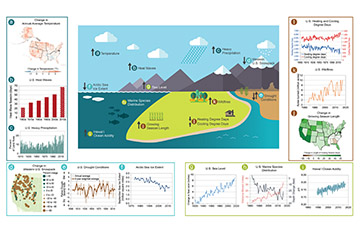
 https://data.globalchange.gov/indicator?current=1,
https://data.globalchange.gov/indicator?current=1,
https://www.globalchange.gov/browse/indicators/us-heat-waves,
Princeton's William Happer rebuts myth of carbon pollution.
https://www.youtube.com/watch?v=tul07hx8V8w Could the sun be the major contributor?
10/09,10 Day 16) Pop Quiz! Then, what can go wrong with regression (continued). Using linear regression to investigate the FL 2000 U.S. Presedential Election and the infamous butterfly ballot. Take a trip to the dentist, amalgams vs. fecal mercury.
16A: Assignment 16
A) By the end of class complete 16D notes pages 1 & 2 + 17D page 2 (we will finish 17D page 1 next week)
B) Complete the 1st half of 17D page 1
C) Read Chapter 9
FYI:
FL Election Results (Excel
97-03) (Excel 2007) (PDF)
View the infamous Butterfly Ballot.
David Quig, PhD - IAOMT presentation: mercury derived from amalgam fillings
(minutes 8:55 - 20:00 pertain to the investigation we did in class.)
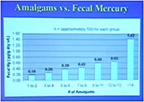
10/07,08 Day 15) What can go wrong with regression.
Learn how leverage and residual produce three flavors of outliers.
15A:
A) Complete page 1 of the Day 16 notes in class (we will finish page 2 on Th/Fri)
B) Pg. 214-221 / 11, 13, 14, 25, 27, 15.
FYI: mix your own flavor of outlier with the Correlation
Regression Demo (be sure to click on the mean-mean line and regression line).
Enrichment:Evaluate real life examples of linear regression and outliers
...................(Gun violence paper 1 & 2 and Covid outbreaks).
Use your knowledge of linear regression to evaluate the paper (and supplement) out of the Harvard Center for Population and Development Studies that finds, "At the country-level, there appears to be no discernable relationship between percentage of population fully vaccinated and new COVID-19 cases in the last 7 days (Fig. 1)."
10/6 Day 15M) Quiz on Correlation and Regression Ch. 7 & 8
15M: (after the quiz)
A) complete the handout activity - The
Wayward Point
10/02,3 Day 14) Clarify the role of R^2, visual, proof challenge. Check
out this R^2 Animation (Thanks to Shubham who helped me animate the information in the blue box on page 183 of our book).
Discuss the success of the model vs. the appropriateness of the model. Learn
to utilize residual plots. Learn to do it on your calculator.
We can calculate the mean of skewed data, but is it appropriate?
We can calculate the R^2 of non-linear associations, but is it appropriate?
Answering - How Confident are you in your prediction?
14A:
A) Turn in the completed class notes – pages 1 and 2.
B) Complete the problems pg.192-199 / 8,11,27,29,31,54.
C) Study for the quiz on chapters 7 and 8 next class (Days 12-14)
Enrichment:
Acumulated Cyclone Energy, Global Warming and Hurricanes.
9/30,10/01 Day 13) How can we use the correlation coefficient to estimate the y value for a given x value? How to write the equation for the line of best fit and other interesting discoveries from doing a BIG proof.
13A:
A) Turn in the completed class notes including problems 1,3,5,7 we did on page 3.
B) Complete the problems pg.192-199 / 14,15,17,19,21,37,42.
C) Read Ch. 8
9/29 Monday Day 12M) Review Test Ch 1-6
12M:
A) Use the key in Day 12M folder to make corrections to 12A_B book problems.
B) finish reading Ch.7 and start reading Ch.8
09/25,26 Day 12) Discover a numerical summary for the strength of the association between two quantitative variables (the spread of points about the form). Be able to calculate correlation coefficients on your calculator.
12A:
A) Turn in the completed class notes.
B) Complete the problems 164-170 / 1, 3, 5, 7, 11, 13, 20, 23, 24, 25, 29, 34, 35, 38.
C) Read Ch. 7
Enrichment: Four Square Multiple Choice _ Plot your own points
Causation? Screen time might boost depression in teens . Full Text of Study
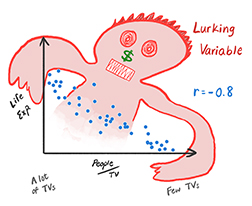
09/23,24 Day 11) Big Test on everything so far this year - Chapters 1-6.
11A - Assignment 11:
A) Complete and submit Monday's handout if you didn't finish it in class.
09/22 Day 11M) Introduction to Part 2
Classwork 11M:
A) finish and submit the handout (available in Schoology)
B) Make correcdtions to A10_A
C) Study for BIG TEST on Ch. 1-6
next class.
09/18,19 Day 10) Review for Big Test next Tue/Wed.
10A:
A) pg. 135-143 / 10, 20, 33, 36, 38. 5, 8 (draw the entire normal model), 14, 25, 27
B) Review for Big Test next Tue/Wed. Review your class notes and assignments from Days 1-10, Chapters 1-6 of your book, as well as the Key Concepts.
Optional practice questions available (assigned) in AP Classroom.
9/16,17 Day 9) Small Quiz on Ch. 6. History of Normal Models.(Galton Board).
Normal Probability Plot.
9A - Assignment 9:
A) Submit completed class notes for 9D pages 1 and 2.
B) get a head start on A10 (Due Sunday night)
C) Review for BIG TEST nexst Tue/Wed
Enrichment: In 1733 Abraham de Moivre, drawing on the work of Jacob and Nicolaus Bernoulli, calculus, and the underlying structure of Pascal's Triangle, demonstrated how a set of random drawings would distribute themselves around their average value. De Moivre's distribution is know today as a normal curve. It makes it possible to evaluate the probability that a given number of observations will fall within some specified bound around a true ratio.
Why pi is in the normal distribution.
9/15 Monday Day 9M) Drawing Normal Models and the Empirical Rule.
Ch. 6 Quiz next class (primarily Ch.6)
9M - Assignment 9M:
A) Complete page 2 of the class notes (we will finish page 1 next class).
B) pg. 131-133 / 25, 26 (25,26 draw the entire model), 31, 32, 44 (draw individual curves and show z score calculations).
C) Read Ch.6 to prepare for a small quiz on Ch. 6 Tue./Wed.
Enrichment:
Proof that 1 standard deviation occurs at the inflection point
09/11,12 Day 8) Journey to Mathmagic Land to discover the power of the Normal Model. Know the cereal example pages 121-123.
8A - Assignment 8:
A) Complete and submit the class notes.
B) p.129-133 / 7, 9, 10, 38, 40, 45 (draw Normal curves for each part of 38,40,45)
Remember N(100, 16) means the mean = 100 and standard deviation = 16 for your z-score calculations.
C) Read pages 116-123.
D) Begin preparing for a quiz on Ch. 6 next Tue/Wed.

9/09,10 Day 7) Quiz Chapters 4 and 5. You can compare ![]() !
!
If you use the standard deviation as a ruler. Begin Ch. 6 Measuring with Standard Deviations. Z-score practice.
7A - Assignment 7:
A) Complete and submit the class notes.
B) p.129-130 / 3, 6, 11, 12, 16, 18, 22.
C) Read pages 104-111.
Enrichment: Check out the official decathlon scoring tables and the theory behind them.
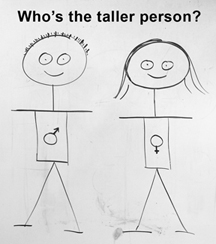
09/08 Mon. Day 6M) Review for Quiz next class (Primarily on Chapters 4 and 5).
6M - Assignment 6M: Warm Up:
Make corrections to A5_B,
A) Complete the in class problems.
B) Complete the Exit Ticket Vocabulary Review.
C) Complete the Decathlon Investigation handout – both sides
D) Review for Tue/Wed Quiz. Study your class notes (concepts/vocab), assignments, and review Chapters 4 and 5 of our book (you can ignore Re-expressing Data pgs 89-91). The quiz will focus primarily on displaying quantitative data and describing distributions numerically but everything covered so far is fair game.
09/04,05 Day 6) Investigate a measure of spread to complement the mean.
Decide when to use which measure of center and spread. Calculators are for calculating aren't they? Learn to find all or our summary statistics with the calculator! Review for Quiz next Tue/Wed. (Primarily on Chapters 4 and 5).
6A - Assignment 6:
A) Edpuzzle – Standard Deviation Theory
B) pages 75-78 / 48,50 (no reports, just write a few sentences) pages 95-100 / #7, 28, 30.
C) Complete the Decathlon Investigation handout –side 1
D) Review for Quiz next Tue/Wed. Study your class notes (concepts/vocab), assignments, and review Chapters 4 and 5 of our book (you can ignore Re-expressing 8Data pgs 89-91). The quiz will focus primarily on displaying quantitative data and describing distributions numerically but everything covered so far this year is fair game.
for newer TI84 users: If your 1-Var Stats input asks for Frequency and you want it to be 1. Then just hit clear and enter.
Enrichment: Advantages of the mean deviation, standard deviation proof, and
Why divide by n-1
Denmark: No More COVID Vaccines Offered for Under-50
What does Pfizer's data on 8 mice say about risk/reward of the Bivalent Omicron Booster?
Dr. Paul Offit on mouse data.
UCSF Dr. & Professor Vinay Prasad discusses risk/reward for bivalent (Omicron) boosters.
Part 1 and Part 2
09/02,03 Day 5) Figure out how to describe the distribution of quantitative data numerically. Be able to calculate 5-number summaries and create boxplots. What can a time plot tell you that a histogram cannot? Investigate the El Nino Southern Oscillation.
5A - Assignment 5:
A) complete and submit pages 1 and 2 of the class notes
B) handwritten on a separate piece of paper complete the following 3 parts:
1. Complete the penny problem from class.
2. Think of and list 3 time series that exhibit seasonal
variation. Be sure to describe the cause (or potential
cause) of the seasonal variation.
3. Pg. 72-76 / 6, 8, 10, 42, Pg. 101-102 / 36
C) Join our AP Section on your College Board Account if you didn't last week.
08/28,29 Day 4) Quiz on Part I Chapters 1,2,3. Then continue to investigate ways of displaying quantitative data. The nuances of creating stem-and-leaf displays. Histograms with the calculator and the importance of proper bar width.
Assignment 4: Handouts and Submissions for parts A, B, and C through Schoology
Read your book up to page 52.
A) complete the Edpuzzle
B) complete and submit the class notes
C) complete and submit Pg. 72-75 / 5, 7, 9, 32
D) Join our AP Section on your College Board Account (see Schoology message)
08/26,27 Tue/Wed Day 3) Explore Simpson's Paradox. Review for Th/Fri quiz on Ch. 1-3. Review of Independenc/Association of Real World Data.
3A Assignment 3:
A) (in class) Edpuzzle: check for understanding - book review Ch. 1-3.
B) Study for quiz on Chapters 1-3 Th/Fri
1) Read you book chapters 1-3.
2) Review the Think, Show, Tell format in the Step-By-Step
Example pg. 31-32.
3) study your class notes and vocabulary
4) review your assignments
C) Start Day 4 Th/Fri notes if you want using the Edpuzzle in the Day 4 Schoology folder.
Enrichment:
Real life example of Simpson’s Pardox with COVID-19 data 12:48-14:55
According to the CDC, "education and messaging to help individual persons understand their risk for medically significant illness complements recommendations for prevention strategies based on risk."
Does the FDA think these data justify the first full approval of a covid-19 vaccine?
COVID-19 Vaccine Mandates for Children Obligate Action (lots of links for more information)
Serious adverse events of special interest following mRNA COVID-19 vaccination (pdf)
UCSF Dr. & Professor Vinay Prasad discusses risk/reward for bivalent (Omicron) boosters
Opportunity to compare and contrast as well as interrogate data, A&B vs. C.
A. SARS-CoV-2 Vaccination and Myocarditis in a Nordic Cohort Study of 23 Million Residents
B. Benefit-risk assessment of COVID-19 vaccine, mRNA (Comirnaty) for age 16–29 years
C. Myocarditis after SARS-CoV-2 infection and COVID-19 vaccination: Epidemiology, outcomes, and new perspectives
Do masks interrupt or reduce the spread of respiratory viruses? What story does the data tell? Use your AP Statistics tools to evaluate the data. Interview with lead author.
Dr. John Campbell
discussion of the paper and appology.
College name and vaccine mandate information.
08/25 Monday Day 3M) Review segmented bar charts to determine independence/association of two categorical variables, evaluate the Investigative Task, and review for quiz Th/Fri.
3M Assignment 3:
A) (in class) Watch the Edpuzzle instructions on how to self-assess assignments. Then self-assess 2A_B Smoking and Education in Schoology.
B) (in class) Submit completed rubric review of your partner's Independenc/Association of Real World Data in Schoology.
C) Do pg. 37-43 / problems 15, 16, 22, 36.
D) Study for quiz on Chapters 1-3 Th/Fri
1) Read you book chapters 1-3.
2) Review the Think, Show, Tell format in the Step-By-Step Example pg. 31-32.
3) study your class notes and vocabulary
4) review your assignments
08/21,22 Th/Fri Day 2) Displaying and Describing
Categorical Data, Take a trip on the Titanic. Investigate contingency tables, conditional
distribution, and segmented bar charts, and independence/association between categorical variables. Titanic - Does chance of survival depend on ticket class? COVID-19 - Does chance of survival depend on age?
2A Assignment 2: Submit parts A, B, and C through Schoology
A) Finish the 3 pages of the class notes.
B) Assignment 3 handout (Smoking and Education) (see Ch. 3 example problems for hints)
C) Complete the investigative task Independence/Association in Real World Data on a separate paper. Reference 6 Month Safety and Efficacy Report and Appendix or FBI Crime Data
D) Read Ch. 1-3 of your book in preparation for quiz next Th/Fri.
Enrichment:
American Statistical Assocition - What's Going On In This Graph?
28 Graphs Teach About Inequality
CDC COVID-19 Pandemic Planning Scenarios, Infection fatality rate analysis
Protection and Waning of Natural and Hybrid Immunity to SARS-CoV-2
CDC Update: Summary of Guidance for Minimizing the Impact of COVID-19
Excess mortality attributed to heat and cold (improper scaling of graph)
08/19,20 Tue/Wed Day 1) Why AP Statistics? What to expect from the course and your teacher. Get a taste of statistics being utilized in a real-world setting. Discuss AP Test expectations. Learn to describe data in its context. Investigate types of variables.
Assignment 1:
A) Complete the Green Sheet and AP Statistics Course and Exam Guide scavenger hunt in Schoology.
B) complete all 4 pages of the class notes (in Schoology), including the problems on pages 1-4 if you didn't finish during classtime. Then upload a multipage pdf of pages 1 - 4.
Consider: Genius Scan, Cam Scanner, etc.
C) Read Chapters 1 and 2 of your book.
Enrichment:
08/18 Mon. Day 0 Introduction to AP Statistics (45 min. class)
Organization of course resources, class structure, resources.
0A - Assignment 0: also posted in Schoology with links
A) Discover The Joy of Stats, complete the Edpuzzle in the Day 0 folder.
B) Begin reading Chapters 1 and 2.